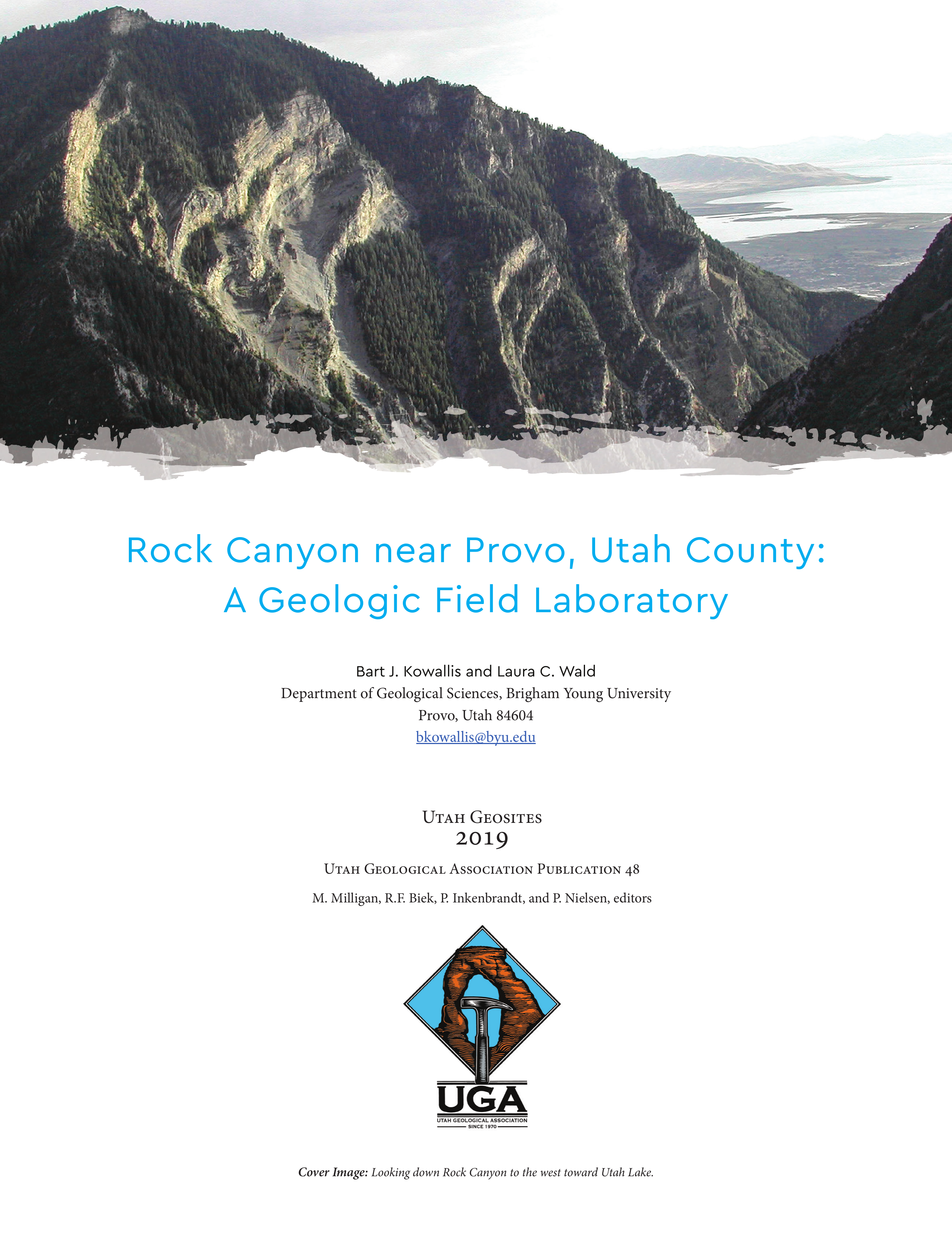Rock Canyon near Provo, Utah County: A Geologic Field Laboratory
Abstract
Rock Canyon near Provo, Utah is an ideal outdoor laboratory. The canyon has been known and explored for many years by scientists and students for its fascinating geology, biology, and botany. It is also a favorite location for rock climbers, hikers, and other outdoor enthusiasts. Facilities near the mouth of the canyon including parking, restrooms, a lecture amphitheater, and a covered pavilion with picnic tables provide an ideal location for visitors.
Geology is the focal point of this beautiful canyon with a history that stretches from the Precambrian (about 700 million years ago) to the Wasatch fault and Lake Bonneville, which covered much of western Utah at its peak roughly 18,000 years ago. Excellent exposures of the rocks allow visitors to see features clearly and piece together the history of the canyon. The oldest rocks are glacial deposits of the Mineral Fork Tillite. The tillite is overlain by a thick section of Paleozoic rocks of Cambrian to Permian age, all of which have been deformed into an asymmetric, overturned fold formed during the Sevier orogeny, a roughly 140 to 50 million year old mountain building event. The upper reaches of the canyon were sculpted by glaciers during the Pleistocene and deposits of the Provo and Bonneville levels of Lake Bonneville are found at the mouth of the canyon, now cut by a recent alluvial fan. Also, at the mouth of the canyon are excellent exposures of features associated with the Wasatch fault.

Copyright (c) 2019 Utah Geological Association

This work is licensed under a Creative Commons Attribution 4.0 International License.

